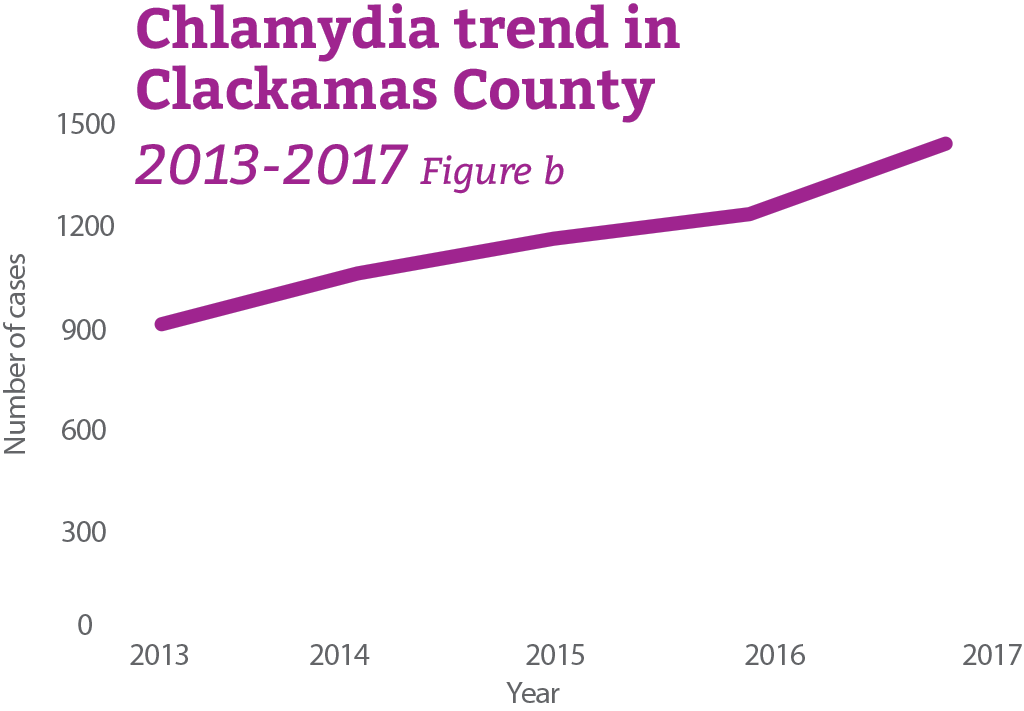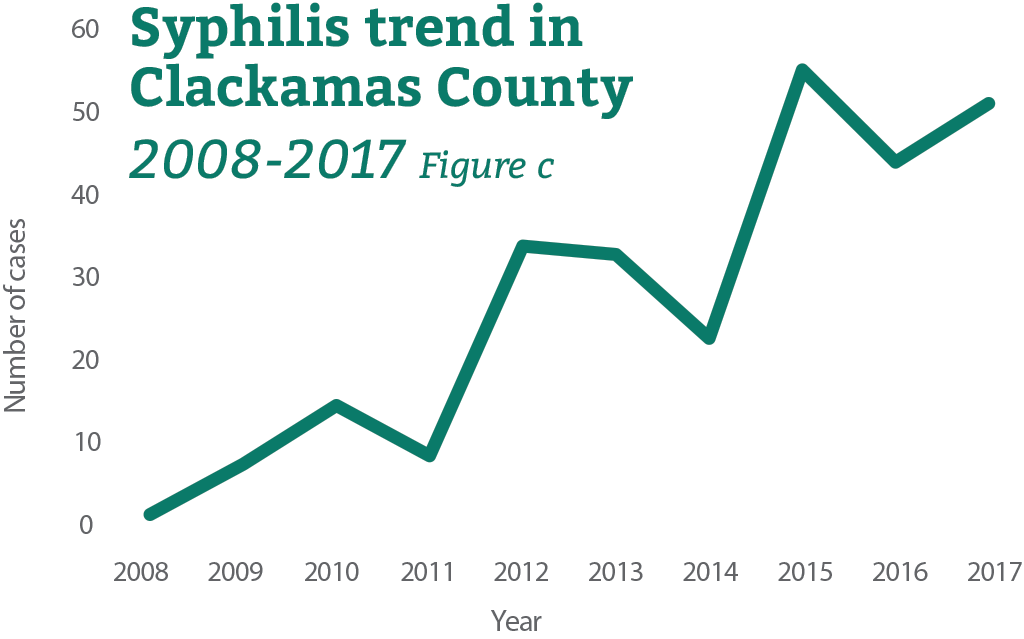OPB News: Clackamas County Tracks Down More Partners Amid Surging STD Rates
Each year, thousands of Clackamas County residents contract bacterial sexually transmitted infections (STIs), such as syphilis, gonorrhea, and chlamydia. In just over five years, rates of syphilis, gonorrhea, and chlamydia have peaked. The rise of STIs in Clackamas County mirrors national, statewide and regional trends. In 2016, the Centers for Disease Control and Prevention (CDC) identified approximately 2 million cases of chlamydia, gonorrhea, and syphilis in the United States – the highest number ever recorded.
Bacterial STIs are frequently preventable and, at this point, treatable. However, when left untreated or improperly treated, STIs can cause serious reproductive health problems and produce drug-resistant bacteria, making first-line antibiotics less effective. (Office of Disease Prevention and Health Promotion, 2018)
While rates of STIs are increasing across all populations in Clackamas County, certain groups, such as young people ages 15 to 24, women, people of color, and LGBTQ+ individuals – particularly gay, bisexual, and men who have sex with men– are disproportionately impacted by STIs.
Clackamas County Public Health and our partners have a role to play to stop the transmission of STIs and has created a report to outlines our initial steps.
Why are STIs soaring back?
Similar to other patterns of disease, there is not a single direct cause for the growing number of STIs or the disproportionate burden some populations face, rather, it is a combination of the many social, cultural, and structural factors that influence sexual behavior, risk, and transmission of STIs.
- Racism, stigma, and poverty all increase the risk of STIs. Low-income populations face a combination of social, epidemiologic and individual risk factors that can increase STI rates.
- A decrease in public health spending can lead to higher transmission rates of gonorrhea and syphilis. Reduced capacity and infrastructure in local public health departments reduces the ability to investigate and provide follow-up for positive cases; notify, test and treat people who have had sex with infected partners; provide sexual education services; and conduct comprehensive STI surveillance.
- Technology has changed the frequency and availability of sex.
- Condom use is inconsistent.
Call To Action: Taking action in Clackamas County to reduce STI rates
Clackamas County Public Health and our partners must lead the way to prevent STIs. For long-term success, all partners need to strengthen and integrate our current efforts, and reimagine our approach to STI prevention. A vision for the future includes all of the work below. If you would like to learn more or be involved in the Call To Action, please contact the PH-CommunicationsTeam@clackamas.us.
- Clackamas County Public Health
Provides STI surveillance and monitoring, health education, and partner notification services. Beginning in January 2018, Clackamas County, along with Multnomah and Washington counties, received funding to enhance and expand HIV and STI investigation, testing, treatment, and prevention services for the region. Through this work, Clackamas County will deepen connections with community partners to identify, test, and treat those who are most at-risk of getting STIs. - Health care clinics
Health clinics make STI testing and timely treatment a standard part of medical care. - Schools
Teach comprehensive sexual health education that focuses on STI prevention practices, participate in the Oregon Healthy Teens Survey, and provide access to a full spectrum of reproductive health care services in school based health centers, including STI testing, treatment, sexual health education, and condoms. - Community organizations
Conduct community-based STI testing. Community organizations also provide culturally-appropriate sexual health education services, which involve safer sex practices, including the use of condoms, abstinence from sex and routine testing for STIs. Community partners have a direct link with those who are most affected by the STI epidemic. Clackamas County does not presently convene a coalition of community organizations to address STIs and their associated inequities. - Policymakers
Advocate for STI prevention funding and ensure that services are free or affordable, promote the use of evidence-based STI prevention and treatment methods, leverage public and private sector resources, and have the ability to improve the structural barriers that put certain populations at higher-risk of contracting STIs.
Resources and more information
To contact Clackamas County Public Health for more information and resources, please call 503-742-5300.
- For more information regarding STIs prevention and treatment resources and services please contact your primary health provider or visit the Clackamas County Public Health reproductive health webpage.
 Translate
Translate









